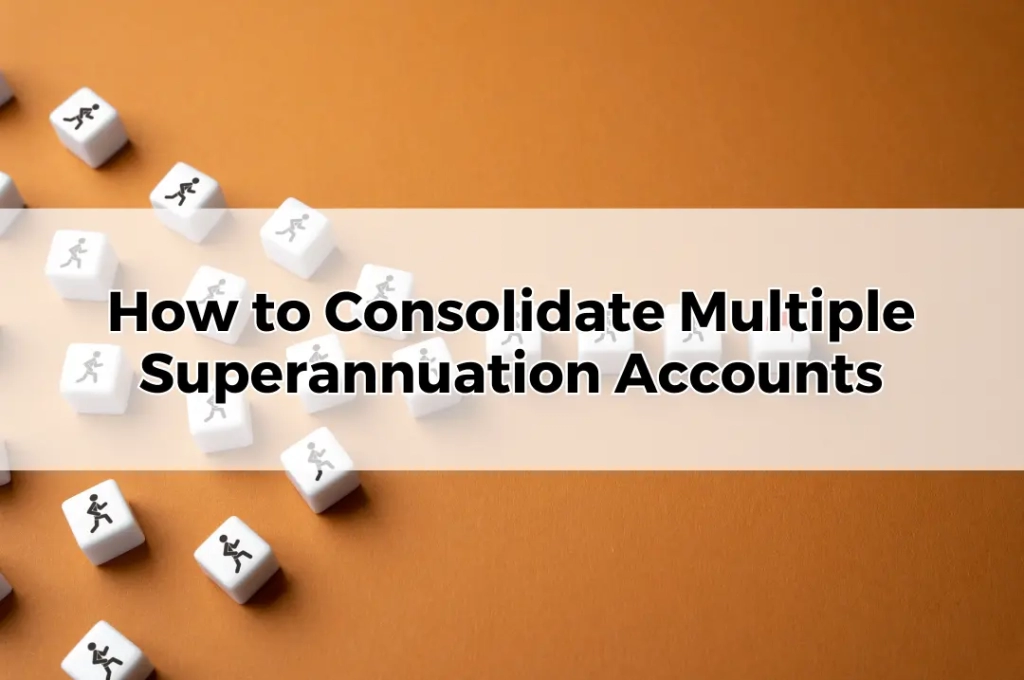How to Consolidate Multiple Superannuation Accounts
Table of Contents
ToggleSuperannuation is a critical component of retirement planning in Australia. It ensures that individuals have sufficient savings to support themselves in their later years. Managing your superannuation efficiently is essential to maximising your retirement benefits.
Consolidating multiple superannuation accounts can streamline your finances, reduce fees, and improve investment returns. By merging your accounts, you can have a clearer overview of your retirement savings and make more informed investment decisions.
Understanding Superannuation
Definition and Purpose
Superannuation, commonly known as “super,” is a long-term savings arrangement designed to provide financial support during retirement. Contributions are made by employers, and individuals can also make voluntary contributions.
How Superannuation Works
Superannuation funds invest the contributions on behalf of the members. These investments grow over time, thanks to compound interest and market returns. The accumulated savings are then available to support you in retirement.
Reasons for Having Multiple Superannuation Accounts
Changing Jobs
Each time you change jobs, your new employer may open a new superannuation account for you. Over time, this can result in multiple super accounts.
Opening New Accounts
Sometimes, individuals open new super accounts to take advantage of specific investment options or features offered by different funds.
Inadequate Knowledge
A lack of understanding about how superannuation works can lead to multiple accounts. Many people are unaware of the benefits of consolidating their super.
Benefits of Consolidating Superannuation Accounts
Cost Savings on Fees
Having multiple super accounts means paying multiple sets of fees. By consolidating, you can save on these fees, increasing your overall retirement savings.
Simplified Management
Managing one superannuation account is simpler than managing several. Consolidation makes it easier to keep track of your investments, contributions, and overall performance.
Improved Investment Performance
With all your funds in one place, you can potentially access better investment options and strategies, leading to improved performance and higher returns.
Potential Drawbacks of Consolidation
Loss of Insurance Benefits
Some superannuation accounts come with insurance benefits. Consolidating accounts might result in the loss of these benefits if you’re not careful.
Exit Fees and Other Charges
Some funds charge exit fees or other costs for transferring your balance. It’s essential to understand these fees before consolidating.
Timing and Market Conditions
The timing of your consolidation can affect your super’s value, especially if markets are volatile. Careful planning is needed to avoid potential losses.
Steps to Consolidate Superannuation Accounts
Gather Information on Existing Accounts
Start by gathering details about all your super accounts, including account numbers, balances, and insurance coverage.
Compare Superannuation Funds
Evaluate your existing funds to determine which one offers the best benefits, lowest fees, and highest performance.
Choose a Fund to Keep
Select the fund that best meets your needs and offers the most advantages. This will be your primary superannuation account moving forward.
Checking for Lost Super
Using the ATO’s Online Services
The Australian Taxation Office (ATO) provides online services to help you find lost or unclaimed super. Use the MyGov portal to check for any super you might have forgotten about.
Steps to Reclaim Lost Super
Once you identify lost super, follow the ATO’s procedures to reclaim it and consolidate it into your main super account.
Comparing Superannuation Funds
Fees and Charges
Compare the fees and charges of your super funds, including management fees, investment fees, and any other costs.
Investment Options and Performance
Review the investment options and historical performance of each fund to ensure you’re choosing one that aligns with your goals.
Insurance Options
Consider the insurance benefits offered by each fund, including life insurance, total and permanent disability (TPD) cover, and income protection.
Choosing the Right Super Fund
Assessing Your Needs and Goals
Consider your retirement goals, risk tolerance, and investment preferences when selecting a super fund. Ensure it aligns with your long-term financial plans.
Seeking Professional Advice
Consulting a financial adviser can provide valuable insights and help you make an informed decision about which super fund to choose.
The Consolidation Process
Notify Your Chosen Fund
Inform your chosen super fund that you intend to consolidate your accounts. They will provide guidance on the necessary steps.
Complete Required Forms
Fill out the required forms to transfer your balances from other super accounts to your chosen fund. Ensure all details are accurate to avoid delays.
Monitor the Transfer
Keep an eye on the transfer process to ensure all funds are moved correctly. Confirm the closure of your old accounts once the transfer is complete.
Post-Consolidation Steps
Verify Account Closure and Transfer
Confirm that all your previous super accounts have been closed and that their balances have been successfully transferred to your main account.
Update Personal Information
Ensure your personal details, such as contact information and beneficiaries, are up to date in your consolidated super account.
Regularly Review Your Superannuation
Regularly review your superannuation to ensure it continues to meet your needs and to make any necessary adjustments based on your financial goals.
Frequently Asked Questions
Is Consolidation Right for Everyone?
While consolidating super accounts offers many benefits, it’s not the right choice for everyone. Consider your personal circumstances and consult a financial adviser.
What Happens to Insurance in the Old Accounts?
Before consolidating, check the insurance coverage in your old accounts. You may want to maintain some insurance policies or transfer similar coverage to your new account.
How Often Should You Review Your Super?
Regular reviews of your superannuation, at least annually, are essential to ensure it aligns with your financial goals and to make adjustments as needed.
Consolidating multiple superannuation accounts can simplify your financial life and boost your retirement savings. By understanding the benefits and drawbacks, carefully comparing funds, and following a structured process, you can make informed decisions that enhance your financial future. Regular reviews and professional advice will ensure your superannuation remains aligned with your long-term goals.









